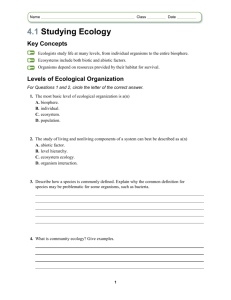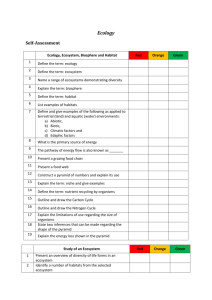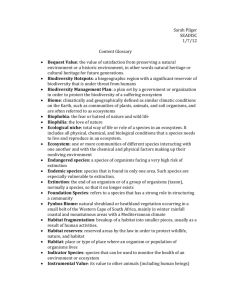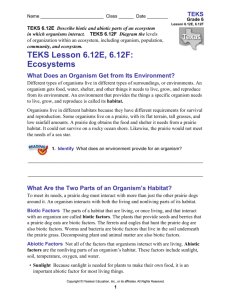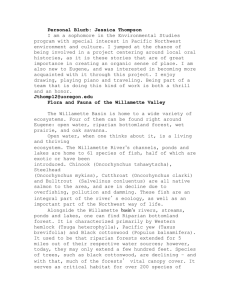Living Things and the Environment Outline/Study Guide What Does
advertisement
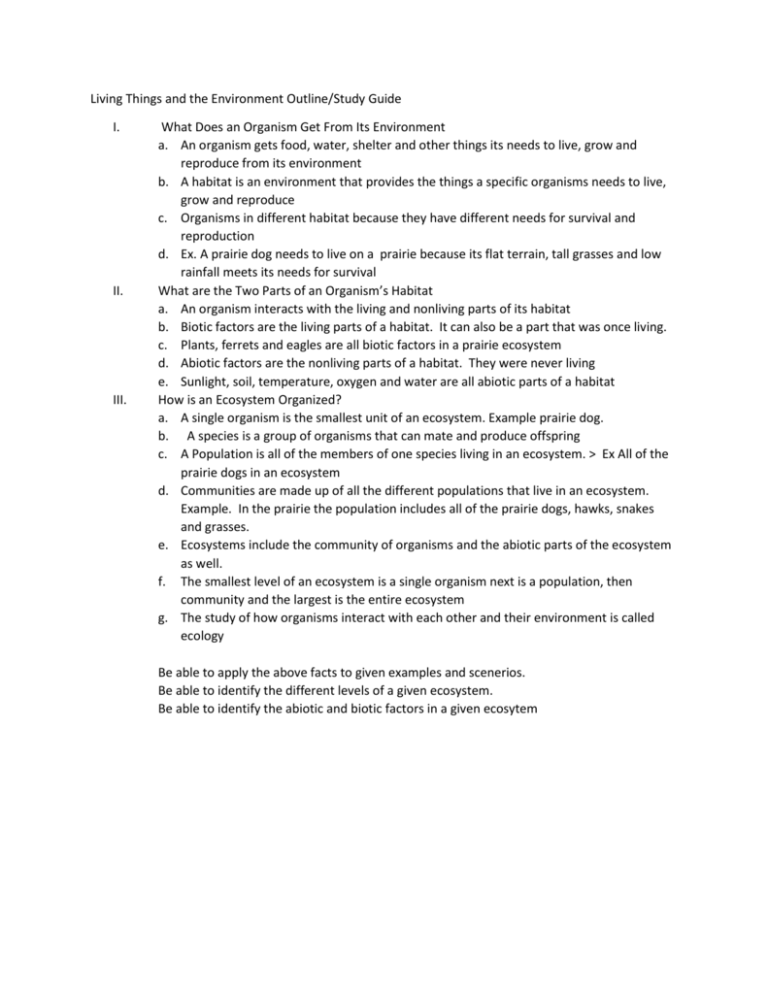
Living Things and the Environment Outline/Study Guide I. II. III. What Does an Organism Get From Its Environment a. An organism gets food, water, shelter and other things its needs to live, grow and reproduce from its environment b. A habitat is an environment that provides the things a specific organisms needs to live, grow and reproduce c. Organisms in different habitat because they have different needs for survival and reproduction d. Ex. A prairie dog needs to live on a prairie because its flat terrain, tall grasses and low rainfall meets its needs for survival What are the Two Parts of an Organism’s Habitat a. An organism interacts with the living and nonliving parts of its habitat b. Biotic factors are the living parts of a habitat. It can also be a part that was once living. c. Plants, ferrets and eagles are all biotic factors in a prairie ecosystem d. Abiotic factors are the nonliving parts of a habitat. They were never living e. Sunlight, soil, temperature, oxygen and water are all abiotic parts of a habitat How is an Ecosystem Organized? a. A single organism is the smallest unit of an ecosystem. Example prairie dog. b. A species is a group of organisms that can mate and produce offspring c. A Population is all of the members of one species living in an ecosystem. > Ex All of the prairie dogs in an ecosystem d. Communities are made up of all the different populations that live in an ecosystem. Example. In the prairie the population includes all of the prairie dogs, hawks, snakes and grasses. e. Ecosystems include the community of organisms and the abiotic parts of the ecosystem as well. f. The smallest level of an ecosystem is a single organism next is a population, then community and the largest is the entire ecosystem g. The study of how organisms interact with each other and their environment is called ecology Be able to apply the above facts to given examples and scenerios. Be able to identify the different levels of a given ecosystem. Be able to identify the abiotic and biotic factors in a given ecosytem IV.


